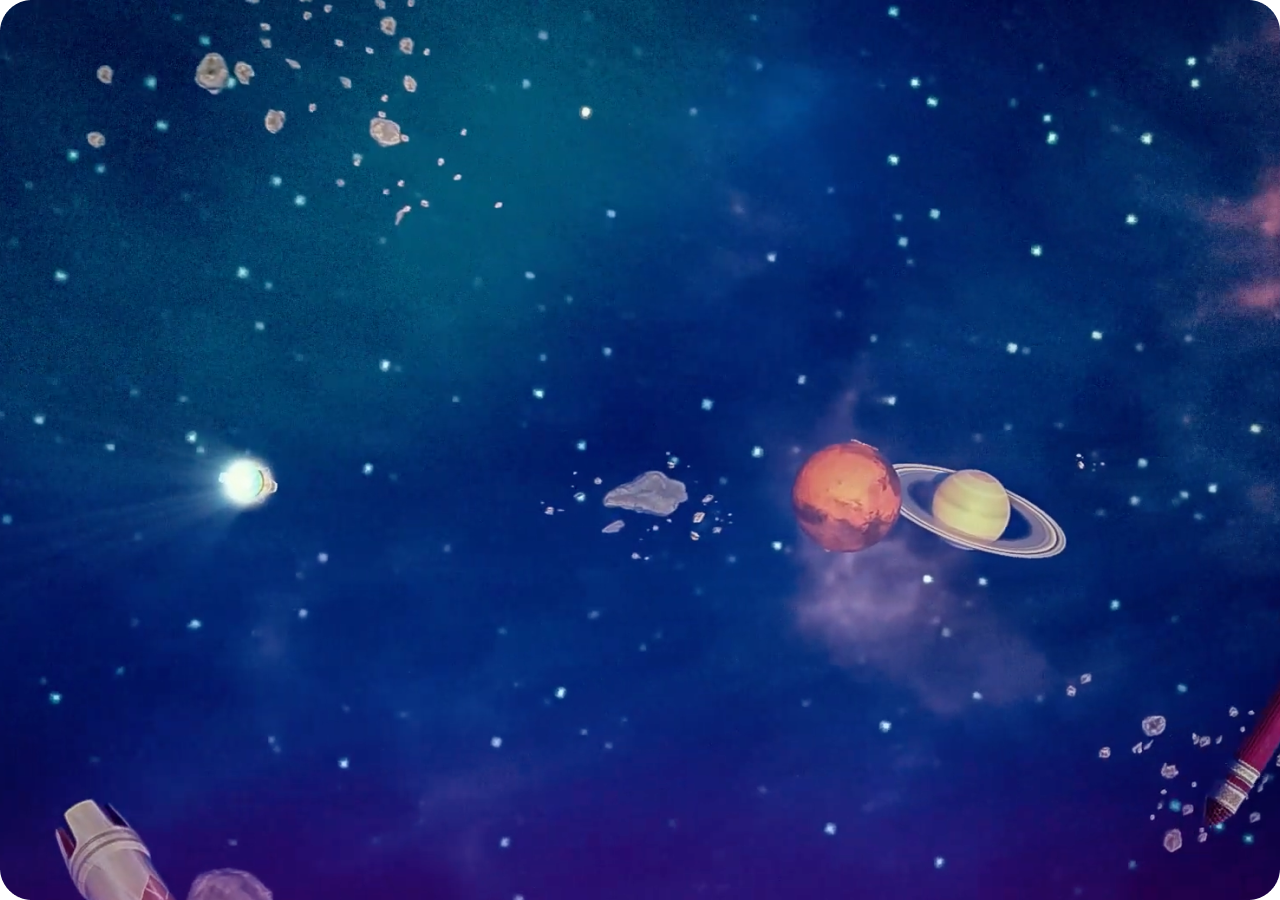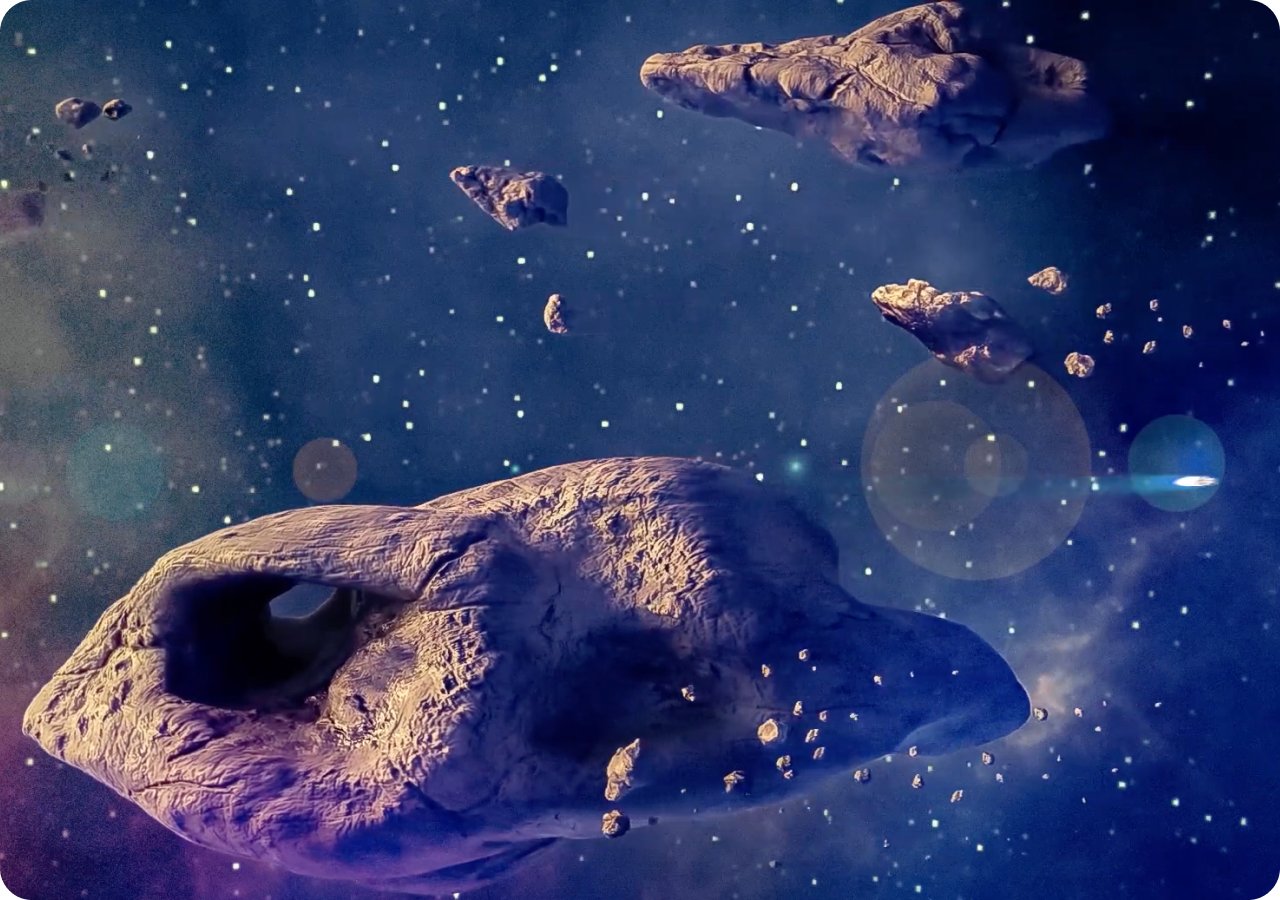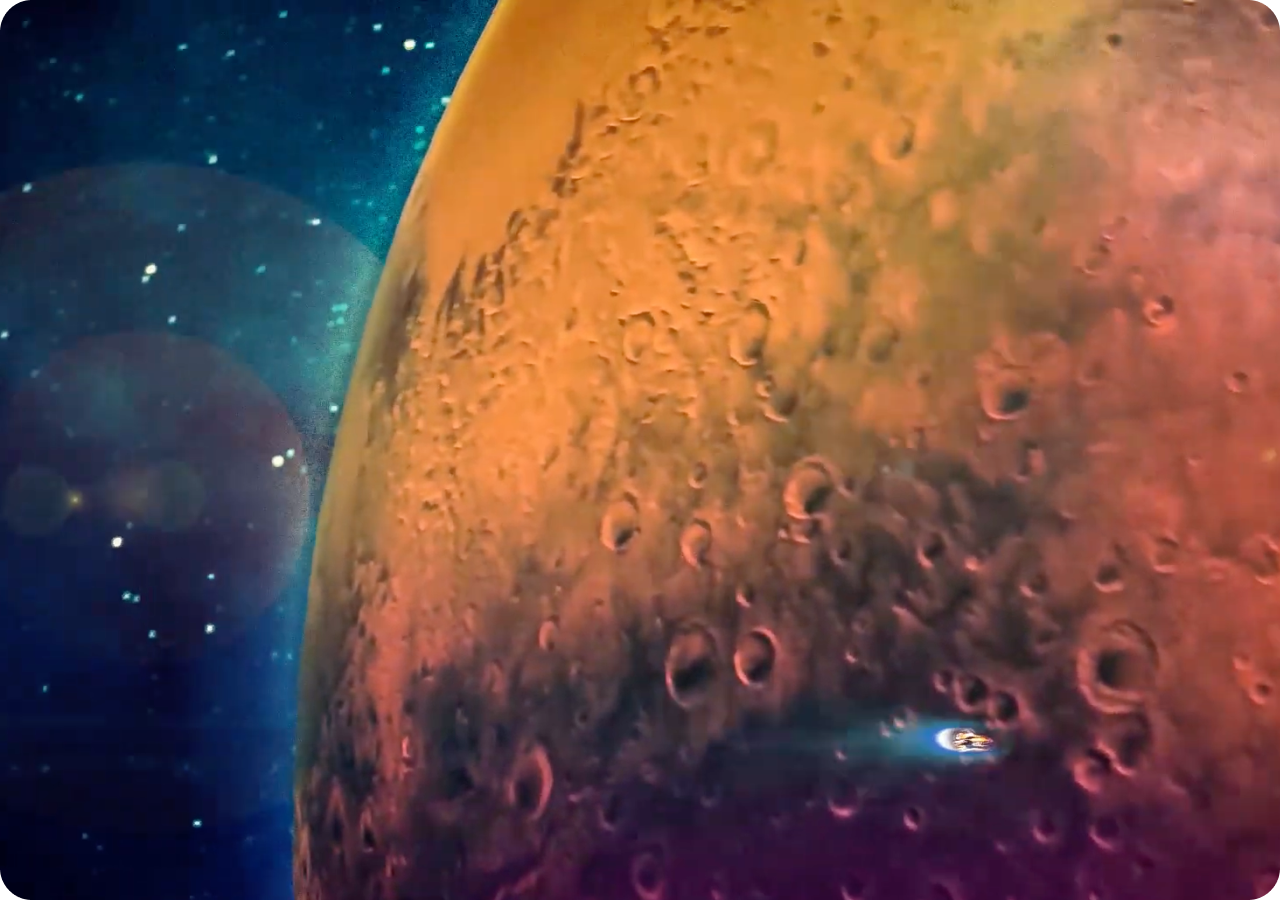Mars
Serious Game
Client
Gamelearn Innovation Startup
Project Overview
Mars is a strategic quiz-based serious game created for Gamelearn, allowing users to generate their own content while blending storytelling and gameplay. Designed for a multigenerational audience, it had to engage both younger users craving fast interactions and older, non-gamers who needed a simple, intuitive interface. My role spanned the entire design process—from conceptualizing game mechanics and narrative to leading visual design, prototyping, UX/UI, and working with the 3D and development teams.
Challenge
The key challenge was creating a game that balanced the expectations of younger players with the needs of older users unfamiliar with games, while delivering a futuristic, immersive experience. This required thorough conceptualization, storytelling, and design based on benchmarking from sci-fi cinema and video games.
My role
Full-stack designer with comprehensive involvement from concept to implementation.
DESIGN APPROACH
I collaborated with the game designer to create the core game mechanics and ensure the storytelling seamlessly connected with gameplay. The narrative wasn’t just a backdrop but guided the user’s journey and actions within the game. By focusing on solution-based design, I ensured that each interactive element served to enhance the storytelling, making the game more engaging and intuitive.
User-Centric Focus Across Generations
One of the biggest challenges was designing for a multigenerational audience. I utilized workshops, interviews, and surveys to identify pain points and expectations from both younger and older users. The results revealed that:
Younger users sought instant engagement and required designs that captured their attention immediately.
Older users needed simpler navigation, larger text, and a clear sense of progression to keep them motivated and engaged.
The final design successfully blended intuitive navigation, bold visual design, and narrative-driven challenges, ensuring all users found the game approachable yet immersive.
Research and Benchmarking
To design a game that catered to different generations, I conducted thorough research and benchmarking. This included analyzing sci-fi films and futuristic video games to influence the visual style and interactions.
Game Conceptualization
I collaborated with the game designer to create the core game mechanics and ensure the storytelling seamlessly connected with gameplay. The narrative wasn’t just a backdrop but guided the user’s journey and actions within the game. By focusing on solution-based design, I ensured that each interactive element served to enhance the storytelling, making the game more engaging and intuitive.
User-Centric Focus Across Generations
One of the biggest challenges was designing for a multigenerational audience. I utilized workshops, interviews, and surveys to identify pain points and expectations from both younger and older users. The results revealed that:
Younger users sought instant engagement and required designs that captured their attention immediately.
Older users needed simpler navigation, larger text, and a clear sense of progression to keep them motivated and engaged.
The final design successfully blended intuitive navigation, bold visual design, and narrative-driven challenges, ensuring all users found the game approachable yet immersive.
Research and Benchmarking
To design a game that catered to different generations, I conducted thorough research and benchmarking. This included analyzing sci-fi films and futuristic video games to influence the visual style and interactions.
One of the biggest challenges was designing for a multigenerational audience. I utilized workshops, interviews, and surveys to identify pain points and expectations from both younger and older users.


Creative Direction & Design Implementation
Storytelling & Branding
The game’s storytelling and branding were essential in building a cohesive experience. I developed the visual identity, color schemes, and typography, all of which represented the game’s strategic and futuristic nature. The branding was consistent throughout, creating a unified visual universe for Mars.
UX/UI Design
I was responsible for the navigation flowchart, ensuring the user journey was clear and intuitive for all age groups. The UI was designed with both accessibility and engagement in mind, providing large, readable elements for older users while maintaining a dynamic, visually compelling interface for younger players. The UX and UI were tested iteratively through prototyping, and I conducted usability tests to ensure the design worked across a range of devices and demographics.
Design System
I created a comprehensive design system that ensured a cohesive visual language across the entire game. This system standardized typography, color palettes, components, and iconography, providing a consistent look and feel while streamlining collaboration with the development team. This approach ensured a smooth implementation process and facilitated future updates.
Typography and Visual Universe
I carefully selected typography that balanced futuristic aesthetics with readability, especially for older users. In addition, I developed a cohesive visual universe, utilizing contrasting colors, clear hierarchies, and immersive visuals to guide users through the game’s layers and maintain engagement.
Collaboration & Leadership
As the lead designer, I managed the design team and led creative meetings to ensure alignment between the project’s creative vision and user research. I also collaborated closely with the 3D team to create assets that fit seamlessly within the game’s universe. Furthermore, I worked with the development team during implementation to ensure all designs were pixel-perfect and functional within the game's framework.
Outcome & Results
The final product was a strategic quiz-based video game that appealed to a broad demographic, providing both young players and older non-gamers an accessible, engaging experience. The game’s storytelling, design elements, and UI all contributed to a fluid user experience that kept users coming back for more, regardless of their gaming background.
Increased engagement from non-gamers, with a measurable improvement in onboarding ease.
Strong storytelling integration with gameplay, making the strategic and quiz elements feel natural and rewarding.
High user satisfaction reported in post-launch surveys, particularly among users unfamiliar with games.
The game's design system ensured consistency and ease of future updates by the development team.
Increased engagement from non-gamers, with a measurable improvement in onboarding ease.
Strong storytelling integration with gameplay, making the strategic and quiz elements feel natural and rewarding.
High user satisfaction reported in post-launch surveys, particularly among users unfamiliar with games.
The game's design system ensured consistency and ease of future updates by the development team.
Conclusion
The Mars project was a deeply rewarding experience, highlighting my ability to manage a project end-to-end—from conceptualization and storytelling to final implementation—while balancing complex user needs across generations.




U︎it